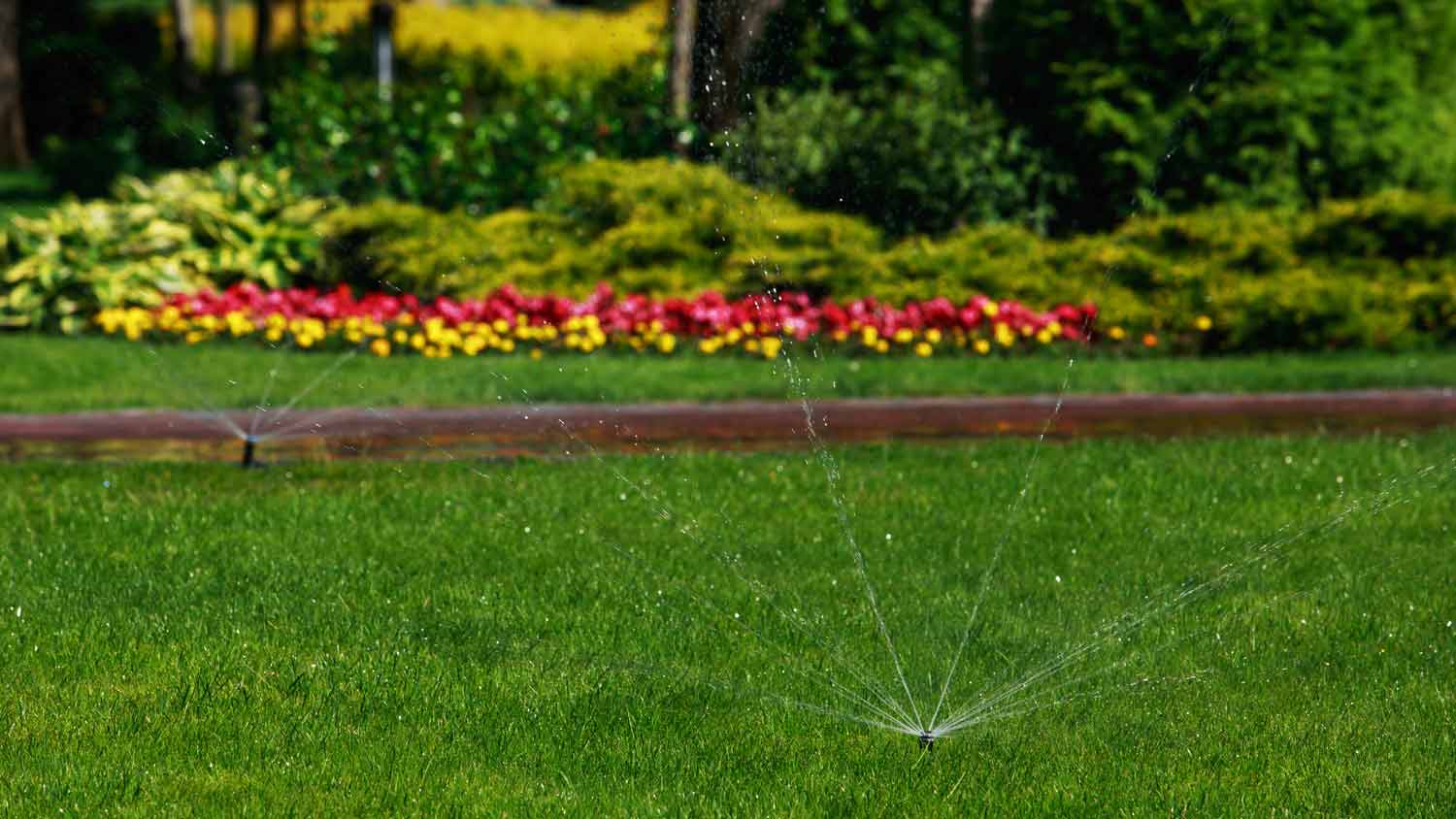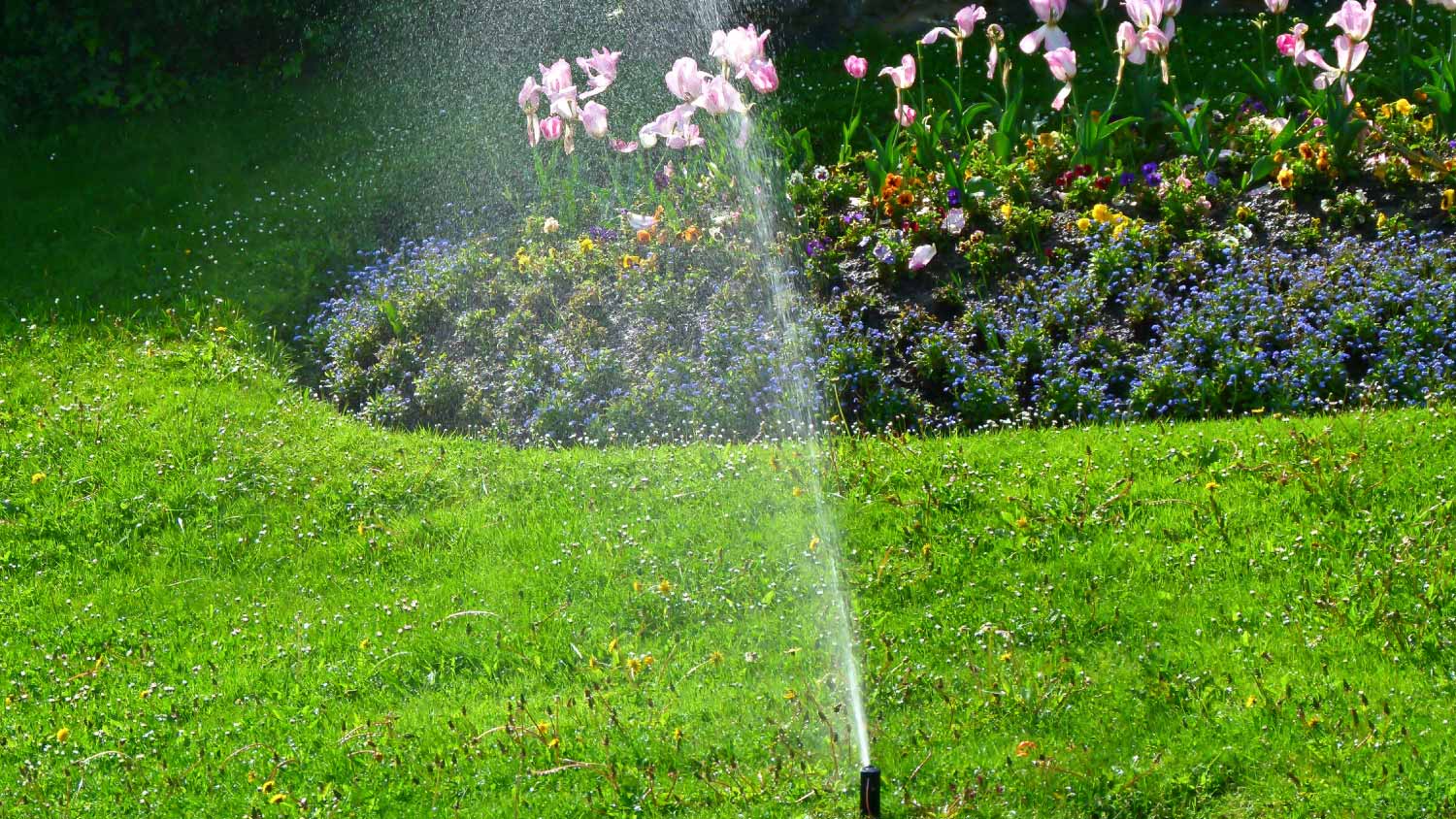The Homeowner’s Guide to Artificial Grass Drainage Systems
Keep your lawn from becoming a pond with an effective artificial grass drainage system


Poor drainage results in puddles that attract bugs and bacteria.
Quick-draining turf and drainage mats have holes for water permeation.
Geotextiles over soil or sand redirect water and prevent weeds.
A drainage hole will prevent puddles in low areas.
Check trees, gutters, and roofs for excessive run-off.
Artificial turf can be a game-changing addition to your home. It requires less maintenance than grown grass and creates a uniform appearance that is vibrant and attractive.
However, because artificial grass does not drain on its own, these lawns can be prone to flooding. Knowing about effective artificial drainage systems will save your yard from becoming a small pond.
What Is an Artificial Grass Drainage System?
Artificial turf has an infill, small pieces that aid the shape and feel of synthetic lawns, while grown grass has soil. Soil and roots will absorb excess water over time. For an artificial lawn to drain water, it must have a drainage system. The appropriate approach is dependent upon your turf needs.
If you’ve decided that artificial grass is right for you, you’ll need to determine which drainage system will work best. An effective turf drainage system will save you money and maintenance.
Why Are Artificial Grass Drainage Systems Needed?
Due to artificial turf's inability to absorb or drain water on its own, ponding, or water accumulation, often occurs. Standing puddles of water aren't simply unattractive; they can become safety hazards and waterlog your yard.
Pooled rain or run-off on artificial grass is slippery and presents a fall risk. Standing water is also a preferred breeding ground for mosquitoes, bacteria, and other pests. An effective artificial grass drainage system will prevent excessive water accumulation and water spots.
Turf Drainage Systems to Consider

Before you can install artificial turf and fulfill your dreams of a perpetually green lawn, you’ll want to consider what type of drainage system will work best.
1. Quick Draining Turf
As artificial lawns are prone to drainage issues, many retailers sell quick or self-draining turf. This turf has a unique backing that allows water to flow freely through a pattern of holes. That water then pools on and absorbs into your base below.
Pet owners with artificial turf prefer this type to eliminate urine quickly. While urine will flush away, it is important to clean your synthetic lawn periodically to avoid smells, stains, and bacteria growth. You should always pick up solid pet waste, as it will not drain like liquids.
2. Drainage Mats
Drainage mats are similar to the backing of quick-draining turf. They are typically rubber or PVC mats with many holes for water permeation. These mats go between the artificial turf and your base. For puddles in localized spots, you can install appropriately-sized square mats to alleviate the pooling.
3. Geotextiles
A geotextile is a layer of fabric, often woven with holes, that allows water permeation. Geotextiles go beneath the turf and prevent pests and weeds. A base of soil or sand will absorb the water as it drains through the textile, protecting your yard from ponding.
4. Drainage Holes and Catch Basins
Uneven turf with dips or hilly spots will cause rain to run and collect at the lowest points of your yard. A simple solution is to install a drainage hole. The hole needn't be large, but it should be able to redistribute pooling water away from the surface of your lawn. A green cover with slats will channel the water into the hole and blend in with your turf.
You can install a catch basin within this hole. A catch basin collects excess water below a lawn's surface. Unlike absorption-based drainage methods, a catch basin will need periodic emptying. Emptying the basin after heavy rain will prevent continued flooding and mosquito spawning.
Signs Your Turf Drainage System Is Not Working
Though installing a drainage system will severely reduce waterlogging, complications may arise. If you have puddles on a lawn with a turf drainage system, you should check if the system is still intact. Clogging from debris can occur and block pathways, resulting in a flood. Holes in mats and turf backing can also become clogged.
Check beneath your artificial grass wherever you see pooling occur. An issue caused by clogging will be noticeable.
Preventing Future Flooding
You cannot control the rain, but there are a few ways that you can prevent ponding beyond your drainage system. Take a survey of your lawn and note where the rain seems to frequently pool. Run-off from trees, roofs, and gutters can create puddles quickly.
Uneven turf can create pockets of pooling water, as gravity leads the rain downward. Consider how you can make the turf even; the solution could be as simple as adding more gravel, granite, or sand to your base layer.
Periodic cleaning and maintenance will allow you to detect any problems within your drainage system. For persistent drainage problems or to receive installation assistance, you may want to consider a local artificial turf specialist. A specialist will address the needs of your unique landscape and help you keep your lawn puddle-free.














